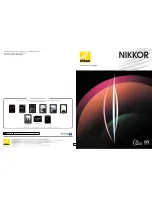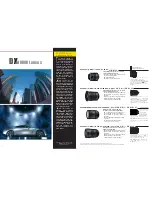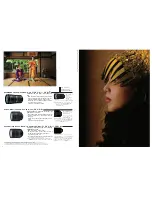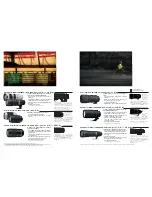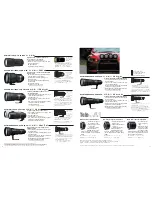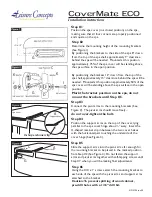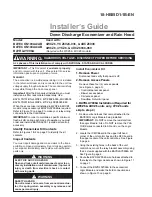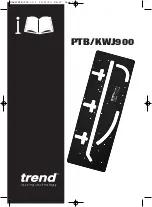
4
5
improved overall lens design
and ensuring the superior
performance of the finished
product.
Electronics — microcomputer
innovation for precise
performance
The recent advances in the
computer industry play an
integral role in the makeup
as well as design of NIKKOR
lenses. For in addition to
superior optics, each AF
NIKKOR features a built-in
microcomputer. This micro-
computer works with the
Nikon AF camera computer
system to provide information
that ensures fast autofocus,
Matrix exposure metering,
Balanced Fill-Flash, and other
Nikon innovations in SLR per-
formance.
Only NIKKOR lenses are
designed for today's and
tomorrow’s Nikon SLR cam-
eras, based on information
and insight available exclu-
sively within Nikon — includ-
ing autofocusing parameters.
No other lens maker can pro-
vide this type of assurance.
The Nikon F lens mount —
a tradition of continuity
and forward compatibility
The debut of the original
Nikon F also marked the
introduction of what is per-
haps its most significant
technological innovation —
the Nikon F lens mount.
This legendary design
ensures that your Nikon
camera is compatible with
most NIKKOR lenses and
that your Nikon equipment
can accommodate future
system advances.
Moreover, the F mount
achieves something no other
design can — it is compati-
ble with both types of lens
drive systems — the conven-
tional mechanical AF cou-
pling design for wideangle
and standard zooms, and
Nikon’s exclusive SWM
(Silent Wave Motor) system
featured in the most
advanced supertelephoto
NIKKOR lenses. This is just
one example why the Nikon F
mount continues to be an
integral part of Nikon camera
equipment design.
Reliability — lenses made
to withstand the toughest
conditions
Each NIKKOR lens is manu-
factured to meet the most
stringent requirements in the
industry. The optical glass is
scrutinised to assure it is free
of imperfections, whereupon
it is then remelted, cast,
ground, polished and hard-
coated to emerge as one of
the world’s finest lens ele-
ments. After being precisely
mounted in lens barrels, the
lens elements and their
assemblies undergo a bat-
tery of tests and inspections,
including vibration and tem-
perature-resistance analysis.
One of these tests concerns
the lens’ Optical Transfer
Function (OTF), which evalu-
ates the resolving power and
contrast of the lens. To per-
form this test, Nikon devel-
oped the exclusive Nikon
OTF Analyser (NOA).
In addition to these
uncompromising tests, Nikon
technicians further guarantee
the performance of the final
product by going over every
detail of every finished lens.
They check and assure the
mechanical construction,
electronics, AF movement,
zoom and aperture mecha-
nisms, and lens resolution.
All of which ensures that the
lens does what it’s supposed
to — provide the outstanding
optical performance and reli-
ability that make NIKKOR
lenses the pro’s choice the
world over.
ikon began producing lenses under the NIKKOR name in 1933, and since then more
than 40 million lenses have been sold worldwide. Throughout the years, our unwaver-
ing commitment to quality and innovation has yielded many breakthroughs in the photo-
graphic industry. For example, Nikon introduced the Nikkor Auto 24mm f/2.8 incorpo-
rating Nikon-pioneered
Close-Range Correction (CRC) system
in 1967, and started
production of
aspherical lenses
in 1968. In addition, Nikon developed
ED (Extra-low
Dispersion) glass
which made its first appearance in the 300mm f/2.8 ED Nikkor tele-
photo in 1972, and is now incorporated in many other NIKKOR lenses. And in 2003,
Nikon produced the
AF-S DX Zoom-Nikkor
12-24mm f/4G IF-ED, as the first lens
optimised for Nikon DX-format digital SLRs in the new DX NIKKOR series.
These are just a few of the many achievements in lens design that exemplify Nikon’s posi-
tion as the world’s preeminent manufacturer of professional photographic equipment. The
following offers in-depth technical information that will help you understand more fully that
NIKKOR lenses provide superior performance and are thus the best match for your Nikon SLR.
Where it all begins —
Nikon glassworks
To make the finest lens ele-
ments, you must begin with
the finest optical glass. To
ensure this, Nikon does what
few makers can — it manu-
factures the glass for nearly
all NIKKOR lenses in its own
glassworks. This means our
lens designers have over
200 types of glass to choose
from, giving them an excep-
tional variety from which to
select just the right optical
glass for their requirements.
Moreover, when these
requirements demand lens
properties not yet available,
the glass technicians work to
find a solution — which often
results in engineering new
types of glass. This is pre-
cisely how Nikon developed
Extra-low Dispersion (ED)
glass in 1972 — to meet
design demands for super-
telephoto NIKKOR lenses.
Lens construction
The peerless craftsmanship
of NIKKOR lens elements
is matched by the structures
that house them. Only
the best materials are
used for the mechanical
construction of each lens.
Fine metal alloys and
polycarbonates make up
the helicoids in some
lenses. Inner and outer
sleeves are tooled with
maximum precision, result-
ing in the smooth lens
movement that characterises
the NIKKOR lens. The lens
mount, too, features similar
materials.
Computers and lens design
Nikon designers employ the
latest computers and Nikon-
developed software to deter-
mine the optical design of
each lens. Using this data
together with their accumu-
lated experience, they create
the finest SLR lenses avail-
able.
Computer-aided design
simulation is also used to
ensure the utmost precision
in the optical and mechanical
parts of each lens as well as
the quality of the lens assem-
bly process. In this way, com-
puters can identify problem-
atic areas thus leading to
N
A history of exceptional performance —
NIKKOR lenses
Optical design using computer
Coating lenses
Adjusting optical axis
Inspecting resolution
Inspecting glass blocks
Optical glass
raw materials
N
ikon
Technolog
y

